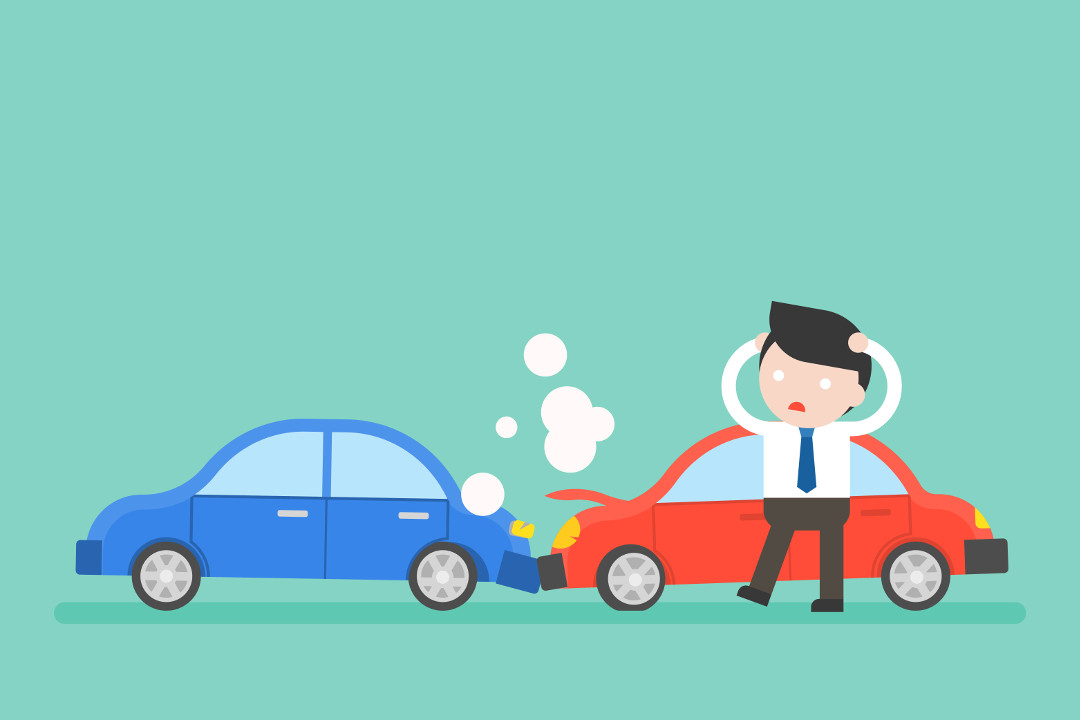
Uninsured and Underinsured Motorist Coverage in New Jersey
Uninsured and Underinsured Motorist Coverage in New Jersey
As the names suggest, Uninsured Motorist (UM) and Underinsured Motorist (UIM) coverage is the portion of an insured’s own policy of insurance under which he may be compensated for injuries and losses suffered at the hands of an uninsured or underinsured driver. Uninsured Motorist coverage is applicable in an accident involving a hit-and-run (or phantom) vehicle or in an accident where the at-fault driver’s insurance has lapsed or is non-existent. On the other hand, where an injured claimant’s injuries are severe and the at-fault driver’s insurance is insufficient to cover treatment, the injured party may pursue Underinsured Motorist coverage from his policy.
Because of the large number of uninsured motorists on New Jersey highways and the frequency of hit-and-run accidents, Uninsured Motorist coverage, codified at N.J.S.A. 17:28-1.1, has been mandatory in New Jersey as of 1973. The scope of Uninsured Motorist coverage is broader than Personal Injury Protection (PIP) coverage in the sense that the scope of PIP coverage applies only to “automobiles.” In contrast, Uninsured Motorist coverage is required for all “motor vehicles.” Compare N.J.S.A. 39:6a-3 and N.J.S.A. 17:28-1.1(e). Thus, for example, the motorcyclist who is clearly excluded from the scope of the PIP law is just as clearly included within the scope of the uninsured motorist law. The same could be said for commercial vehicles, which are likewise excluded from PIP but included in UM coverage.
Uninsured Motorist
Included Uninsured Motorist Coverage

Pursuant to N.J.S.A. 17:28-1.1(e)(2) and the typical Uninsured Motorist endorsement, there are five situations in which a motor vehicle is considered uninsured:
- when no policy of insurance covers the vehicle in question at the time of the accident;
- when the vehicle’s insurer disclaims coverage;
- when the insurer has become insolvent or declared bankruptcy;
- when the vehicle qualifies as a “hit and run” or phantom vehicle; and
- when the automobile is covered by a “special” automobile policy pursuant to N.J.S.A. 39:6A-3.3.
No Liability Policy
The most straightforward situation is where the at-fault driver has neglected to secure liability coverage or allowed it to lapse. However, note the exceptions above for the situation where the uninsured vehicle is owned by the injured individual or any resident of the same household, or the case where the vehicle is publicly-owned.
The Vehicle’s Insurer Disclaims Coverage (e.g., Stolen Vehicle)
N.J.S.A. 17:28-1.1(e)(2)(b) provides that a vehicle is uninsured even if there is a valid policy of liability insurance applicable to the vehicle if the insurer disclaims coverage. Significantly, the statute does not distinguish based on the reasons for disclaimer.
In the situation where the at-fault vehicle was stolen, it is plainly rendered uninsured for application of the Uninsured Motorist statute. Hardy ex rel. Dowdell v. Abdul-Matin, 397 N.J. Super. 574, 586 (App. Div. 2007), rev’d on other rounds 198 N.J. 95 (2009); Shaw v. City of Jersey City, 174 N.J. 567, 575 (2002) (noting when an insurer denies third-party liability coverage for whatever reason, precisely the same situation exists as if no insurance had been carried at all.). Additionally, where injuries are sustained during the struggle of a carjacking, courts have found Uninsured Motorist coverage to be available. See e.g. Grabowski v. Liberty Mut. Ins., 345 N.J. Super. 241, 244, 247 (App. Div. 2001).
Insurer Insolvent or Bankrupt
The Uninsured Motorist statute also provides that where a vehicle’s liability policy was written by an insurer that later became insolvent or bankrupt, the vehicle is uninsured for purposes of UM coverage. N.J.S.A. 17:28-1.1(e)(2)(b).
As for self-insured vehicles, the statute excludes them from being considered uninsured but only where the insurance is valid. Thus, where the self-insurer becomes insolvent or declares bankruptcy, the same principle is applied, and Uninsured Motorist coverage becomes available. See e.g., Allstate Ins. Co. v. Altman, 200 N.J. Super. 269 (Ch. Div. 1984); Goodwin v. Rutgers Cas. Ins. Co., 223 N.J. Super. 195 (App. Div. 1988).
Hit-and-Run Vehicle
A hit-and-run vehicle, as defined in N.J.S.A. 39:6-78, is expressly included in the definition of an “uninsured motor vehicle” provided by N.J.S.A. 17:28-1.1(e)(2)(c). A hit-and-run vehicle is defined as one as to which “the identity of the motor vehicle and the operator and owner thereof cannot be ascertained or it is established that the motor vehicle was, at the time said accident occurred, in the possession of some person other than the owner without the owner’s consent and that the identity of such person cannot be ascertained.” N.J.S.A. 39:6-78. Note that reasonable efforts to identify the vehicle, its owner, and its operator are required. Tonic v. American Cas. Co., 413 N.J. Super.458, 473-474 (App. Div. 2010); O’Connell v. N.J. Mfrs. Ins. Co., 306 N.J. Super. 166 (App. Div. 1997).
Significantly, a hit and run vehicle need not actually make contact with a claimant or his vehicle in order for the injured individual to collect Uninsured Motorist benefits, nor does the existence of the “phantom” vehicle have to be corroborated by independent evidence in order to make our a prima facie UM claim. Perez v. American Bankers Insurance Co. of Florida, 81 N.J. 415, 419 (1979). For instance, this would be the situation where a “phantom” vehicle forces the claimant’s vehicle off the road and into a tree.
Automobiles Covered by “Special” Policies
Vehicles covered by “special” policies are made available to certain low-income individuals and provide only emergency PIP coverage and death benefits. As these policies do not include liability coverage, injured individuals seeking recovery from drivers insured with “special” policies have no recourse against the special policy. Consequently, “special” policies are deemed to be uninsured.
Note: vehicles insured with valid “basic” policies, which do not require but permit liability coverage, are never considered uninsured even in the case where no liability coverage exists. Instead, as set forth below, vehicles insured with “basic” policies are considered Underinsured Motorists. However, there appears to be no rational basis for distinguishing the two.
Exclusions to Uninsured Motorist Coverage

In addition to the five instances set forth above, wherein a motorist is considered uninsured, there likewise exists five exclusions:
- when the motor vehicle in question is merely underinsured;
- when the motor vehicle is owned by or furnished for the regular use of the named insured or any resident of the same household;
- when the motor vehicle is covered by valid self-insurance;
- when the motor vehicle is publicly-owned regardless of coverage; and
- when the motor vehicle is covered by a “basic” policy pursuant to N.J.S.A. 39:6A-3.1.
Underinsured Vehicle
Where the at-fault vehicle carries liability insurance but the limits are inadequate to meet the total amount of damages suffered, a vehicle is considered underinsured rather than uninsured. For a discussion regarding Underinsured Motorist (UIM) coverage, see below.
Owned but Uninsured
Under N.J.S.A. 17:28-1.1(e)(2), an insurer may exclude owned but uninsured vehicles. Further note that the exception excludes uninsured vehicles owned by a resident of the claimant’s household, even if the vehicle owner is not a relative. Therefore, in the situation where an insured is operating an insured vehicle and then is injured by an uninsured vehicle owned by either him or a resident of his household, the injured individual is barred from pursuing UM coverage.
Self-Insured Vehicles
The Uninsured Motorist statute also provides that self-insured vehicles are not to be considered uninsured vehicles for purposes of triggering UM liability. However, as noted above in the inclusions section, the exclusion only applies to solvent and viable self-insurers as “[t]he instruction of [the statute] is that an authorized and financially responsible self-insurer is not to be deemed uninsured. An insolvent self-insurer is neither insured nor financially responsible.” Goodwin v. Rutgers Cas. Ins. Co., 223 N.J. Super. 195, 198 (App. Div. 1988). Therefore, where a self-insurer cannot provide coverage, the vehicle will be rendered uninsured for the purposes of Uninsured Motorist coverage.
Publicly-Owned Vehicles
Pursuant to N.J.S.A. 17:28-1.1(e)(2), all motor vehicles owned by the United States or Canada or by any state, political subdivision, or agency of either country are excluded from the definition of “uninsured motor vehicle.” But see Tozzo v. Universal Underwriters, 261 N.J. Super. 586 (App. Div. 1993) (where it was held that a vehicle owned by the Federal government is uninsured under the statute when the vehicle operator is, himself, uninsured and the federal government denies vicarious liability.). However, note that application of this “vicarious liability” analogy is inapplicable where a New Jersey governmental entity is either insured or self-insured and should be approached with caution where they are wholly uninsured. See e.g., Christy v. City of Newark, 102 N.J. 598 (1986).
Automobiles Covered by “Basic” Policies
Lastly, the definition provided by N.J.S.A. 17:28-1.1 expressly excludes automobiles covered by a “basic” insurance policy. While “basic” policies may provide bodily injury liability coverage, the coverage is optional. Therefore, many of the “basic” policies will not include liability coverage. Nevertheless, in the situation where no liability coverage exists, the injured individual would pursue Underinsured Motorist (UIM) coverage rather than Uninsured Motorist (UM) coverage.
Underinsured Motorist

Underinsured Motorist (UIM) coverage is governed by the same statute governing Uninsured Motorist (UM) coverage. See N.J.S.A. 17:28-1.1(e)(1) (defining Underinsured Motorist Coverage). Generally, uninsured and underinsured motorist coverage is made available to insureds in New Jersey as one integrated coverage. However, the coverages are radically different in nature.
The most significant difference between Uninsured Motorist (UM) coverage and Underinsured Motorist (UIM) coverage is that every “standard” insurance policy providing liability coverage in New Jersey must include UM coverage. On the other hand, every such policy must only offer as an option UIM coverage. N.J.S.A. 17:28-1.1(b). However, due to the usual practice in New Jersey of bundling UIM coverage with UM coverage and charging a single premium, the optional nature of UIM coverage is lost to most insureds.
Therefore, while a self-insurer must provide UM coverage, it has no obligation to provide UIM coverage. See Downey v. City of Elizabeth, 273 N.J. Super. 335, 339 (App. Div. 1994) (holding that a municipal self-insurer is not required to provide optional UIM coverage for vehicles owned by the municipality.).
Conclusion
If you have suffered injuries due to a motor vehicle accident with an uninsured or underinsured motorist and wish to discuss your legal options, Farrell & Thurman, P.C., offers a variety of convenient ways to schedule a free, no-pressure consultation. You may do so directly on our website (Schedule a Consult), via phone (609-924-1115), or by email (Contact Us).
